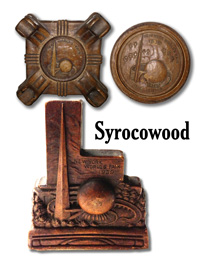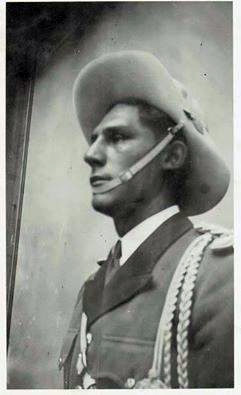Syrocowood
Many of the souvenirs that were sold at the NY World's Fair were made of a product called "Syrocowood." But what is Syrocowood and where does it come from. A search on Google brought this answer from Special Collections Research Center, Syracuse University Libraries.
The Syracuse Ornamental Company, known as Syroco, was an American manufacturing company based in Syracuse, New York. They were best known for their molded wood-pulp products that resembled hand-carving.
Founded in Syracuse, New York in 1890 by immigrant Adolph Holstein, the Syracuse Ornamental Company (Syroco) specialized in decorative wood carving, especially for the local residential market. Products included fireplace mantelpieces and other types of interior decoration popular in late Victorian homes. To meet increasing market demand and sales opportunities Holstein developed a material looked and felt like wood but that which could be shaped, allowing multiple pieces to be produced through a molding process. The new product, which combined wood pulp brought from the Adirondacks with flour as a binder and other materials to give it strength, was extruded and then cut to fit compression molds, which had were made from original carvings in real wood.

The process favored shallow molds with little undercutting, and this served well for the creation of a wide variety of "carved" relief work to be applied to different sorts of flat surfaces such as walls, furniture and caskets. Production of this new molded product, known as SyrocoWood, was the mainstay of the company's production through the 1940s. The finished material could be smoothed and varnished to look like wood, or it could be painted. Sales catalogues from the early 1900s through the 1920s offer hundreds of varieties of moldings, capitals, brackets, volutes, and reliefs of vases, garlands, cartouches, scrollwork, and other details in a variety of styles.
Syroco operated from a large factory complex on 581 South Clinton Street in Syracuse acquired from Smith Corona Typewriter Company. The company remained in the hands of the Holstein family for three generations, with some of Adolph's children and grandchildren taking over management and sales positions. At its peak, about 400 workers were employed at the plant.
By the 1930s the company had also developed an extensive line of gift and novelty items made of "SyrocoWood" and also "Woodite," a combination of wood flour and polymer. In the 1960s the company began to use injection molding for some of its products, but did not entirely abandon its old processes.
Read more about the Syracuse Ornamental Company on Wikipedia 



